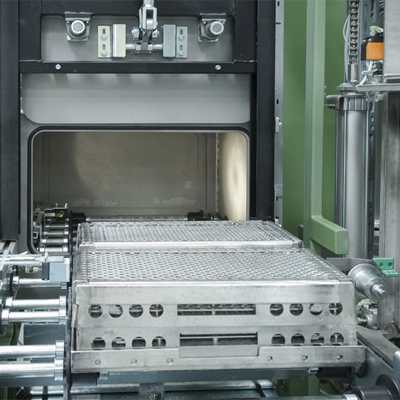Powering the Future: Advancements in Automotive Electrical Systems

Introduction
In the rapidly evolving world of automotive technology, advancements in electrical systems have become the driving force behind innovation and efficiency. From electric vehicles to autonomous driving capabilities, the future of transportation is increasingly reliant on cutting-edge electrical architecture. In this article, we delve into the exciting developments that are reshaping the automotive industry.
I. Traditional automotive electrical systems
Before we explore the advancements in automotive electrical systems, it's important to understand the foundation on which these innovations are built. Traditional automotive electrical systems consist of a 12-volt electrical system that powers various components in a vehicle, such as lights, ignition systems, and power windows. This system relies on a lead-acid battery to provide electrical energy, while the alternator generates electricity to recharge the battery. While this system has served us well for many years, it is limited in its capacity to support the demands of modern vehicles.
II. Advancements in automotive electrical systems
With the rapid advancement of technology, automotive electrical systems have undergone a significant transformation. One of the most notable advancements is the shift towards high-voltage electrical systems. These systems operate at voltages of 48 volts or higher, allowing for increased power and efficiency. This shift has been driven by the need to support the growing number of electrical components in vehicles, including advanced safety features, infotainment systems, and electric drivetrains.
Another key advancement is the integration of computer systems into automotive electrical systems. These computer systems, also known as Electronic Control Units (ECUs), monitor and control various functions in the vehicle, such as engine performance, braking systems, and climate control. By integrating these systems, vehicle manufacturers can optimize performance, improve fuel efficiency, and enhance overall safety.
III. Key components of modern automotive electrical systems
Modern automotive electrical systems consist of several key components that work together to power and control various functions in the vehicle. These components include:
Battery: The heart of the electrical system, the battery provides the necessary electrical energy to start the vehicle and power the electrical components when the engine is not running.
Alternator: The alternator is responsible for generating electricity to recharge the battery and power the electrical components while the engine is running. It converts mechanical energy from the engine into electrical energy.
Starter motor: The starter motor is used to crank the engine and start the vehicle. It draws electrical energy from the battery to rotate the engine's crankshaft until it reaches the necessary speed for combustion.
ECUs: As mentioned earlier, Electronic Control Units play a crucial role in modern automotive electrical systems. These computer systems monitor and control various functions in the vehicle, ensuring optimal performance and safety.
Wiring and connectors: The wiring and connectors in a vehicle's electrical system are responsible for transmitting electrical signals and power to the various components. They need to be of high quality and properly insulated to prevent electrical faults and ensure reliability.
IV. Benefits of advanced automotive electrical systems
The advancements in automotive electrical systems offer several benefits that are driving their widespread adoption in the industry. One of the key benefits is improved fuel efficiency. By optimizing the performance of various components, such as the engine and transmission, advanced electrical systems can help reduce fuel consumption and emissions.
Another major benefit is enhanced safety. With the integration of advanced sensors and software, modern vehicles are equipped with features such as collision avoidance systems, lane departure warning, and adaptive cruise control. These systems rely on the electrical architecture of the vehicle to function effectively, making our roads safer for everyone.
Additionally, advanced automotive electrical systems contribute to a more comfortable and convenient driving experience. Features such as keyless entry, touchscreen infotainment systems, and smartphone integration have become standard in many vehicles, providing drivers and passengers with a seamless and enjoyable journey.
V. Electric vehicles and their impact on automotive electrical systems
The rise of electric vehicles (EVs) has had a significant impact on automotive electrical systems. Unlike traditional internal combustion engine vehicles, EVs rely solely on electricity for propulsion. This shift has necessitated the development of high-voltage electrical systems and advanced battery technologies.
One of the key challenges in designing electrical systems for EVs is the need for efficient and reliable charging infrastructure. Advancements in battery technology have enabled longer ranges and faster charging times, making EVs more practical for everyday use. However, the widespread adoption of EVs is still hindered by the availability of charging stations and the time it takes to recharge the batteries.
Despite these challenges, the adoption of EVs is expected to continue growing as governments and manufacturers invest in infrastructure and technology. The advancements in automotive electrical systems have made EVs a viable and sustainable alternative to traditional vehicles, offering lower emissions and reduced reliance on fossil fuels.
VI. Challenges in implementing advanced automotive electrical systems
While the advancements in automotive electrical systems are exciting, they also present several challenges that need to be addressed. One of the main challenges is the increased complexity of these systems. With the integration of advanced sensors, software, and computer systems, the electrical architecture of vehicles has become more intricate. This complexity requires extensive testing and validation to ensure the reliability and safety of the systems.
Another challenge is the cost associated with implementing advanced electrical systems. The development and integration of new technologies can be expensive, which can impact the affordability of vehicles. However, as technology continues to evolve and economies of scale are realized, the cost of these systems is expected to decrease, making them more accessible to consumers.
VII. Future trends in automotive electrical systems
The future of automotive electrical systems looks promising, with several trends on the horizon. One of the key trends is the integration of artificial intelligence (AI) into these systems. AI has the potential to revolutionize the way vehicles operate, enabling advanced driver assistance systems, predictive maintenance, and personalized driving experiences.
Another trend is the development of wireless charging systems. These systems eliminate the need for physical connections, allowing for convenient and efficient charging of electric vehicles. Wireless charging technology is still in its early stages, but significant progress is being made, and it holds great potential for the future of transportation.
Furthermore, the advancements in battery technology are expected to continue, with the development of more efficient and higher-capacity batteries. This will further extend the range of electric vehicles and reduce charging times, making them even more practical and convenient for everyday use.
VIII. The role of artificial intelligence in automotive electrical systems
Artificial intelligence is set to play a crucial role in the future of automotive electrical systems. With advancements in machine learning and data analysis, AI can analyze vast amounts of data from various sensors and systems in real-time, enabling vehicles to make intelligent decisions and adapt to changing road conditions.
AI-powered systems can enhance autonomous driving capabilities, allowing vehicles to navigate complex environments and make split-second decisions. These systems can also optimize vehicle performance based on driver preferences and road conditions, ensuring a safer and more efficient driving experience.
Additionally, AI can enable predictive maintenance, allowing vehicles to detect and address potential issues before they become major problems. This can help prevent breakdowns, reduce maintenance costs, and improve vehicle reliability.
Conclusion
In conclusion, advancements in automotive electrical systems are transforming the future of transportation. From electric vehicles to autonomous driving capabilities, these systems are revolutionizing the way we power and control vehicles. With improved fuel efficiency, enhanced safety features, and a more comfortable driving experience, the benefits of advanced automotive electrical systems are undeniable. As technology continues to evolve, we can expect even more exciting developments in the years to come, bringing us closer to a greener, safer, and smarter future of transportation.



